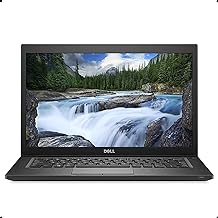5 important factors worth considering when looking for the best stereo microscopes
When you’re looking to buy a stereo microscope, it’s important to be careful so that you get one that meets your needs. There are many different features to consider, like how much you can magnify things and what kind of lighting it has. It’s crucial to really think about these factors to get the best viewing experience and make accurate observations. Understanding these important aspects will help you make a smart decision and choose a stereo microscope that fits well with what you need it for, whether that’s for work, school, or just for fun.
See our guide to the best stereo microscopes.
Magnification range
When choosing a stereo microscope, it’s important to find a balance between versatility and practicality. While it may be tempting to go for the highest magnification possible, a wider range doesn’t always mean better quality. A stereo microscope with a moderate magnification range can often give clearer and more detailed images, making it a better choice for many uses. By focusing on the quality of the images rather than just the magnification range, you can have a better experience with microscopy.
It’s also important to think about what you’ll be using the stereo microscope for when deciding on the magnification range. Different uses, whether for research, education, or industry, may need specific levels of magnification to get the best results. Matching the microscope’s magnification range to the intended use can improve the accuracy of observations and make the instrument more useful. The ideal magnification range will balance versatility with functionality, allowing users to explore the microscopic world clearly and easily.
Objective lens quality
When looking for a stereo microscope, it’s important to consider the quality of the objective lens. While it may be tempting to only think about how close you can zoom in, the key to a good microscope is its ability to show clear, sharp images. A top-notch objective lens is like a window into a tiny world, revealing all the tiny details accurately. Getting a microscope with great objective lenses can improve your viewing experience, making it easier to observe and analyze specimens.
Quality objective lenses are crucial for stereo microscopes. A better lens means better resolution, contrast, and overall image quality. It can make the difference between a blurry, unclear image and a clear, detailed view of the specimen you’re studying. So, remember to prioritize objective lens quality over just magnification power when shopping for a stereo microscope. Your research, experiments, or educational activities deserve the best clarity and accuracy that a high-quality objective lens can offer.
Working distance
When thinking about stereo microscopes, it’s important to consider how far away you can work from the object being observed. This distance is crucial for making sure the microscope is easy to use and comfortable. While some people focus on how much the microscope can magnify or how well it lights up, the working distance is a key factor that affects how you interact with the specimen. It plays a role in how easy it is to move things around, how clear your observations are, and how efficiently you can do your microscopic tasks. A good working distance lets you move tools and samples easily, reduces eye strain, and helps you be more precise during exams. It’s an important element that connects the observer with the object being studied, making interactions smooth and productive for better research and analysis.
In addition, the working distance of stereo microscopes combines technical details with practical use, blending precision engineering with user-friendly design. A longer working distance doesn’t just broaden the microscope’s potential applications; it also shows a dedication to user comfort and convenience. It gives professionals in various fields, like biology, geology, electronics, and materials science, a flexible platform for detailed studies without sacrificing ease or accuracy. Overall, the working distance represents a balance between scientific precision and user experience, proving that advanced instruments should enhance our abilities while also meeting our ergonomic needs for a truly engaging and satisfying microscopy experience.
Illumination type
When you’re buying a stereo microscope, the lighting it provides is really important for how well you can see things. Picking the right kind of lighting is crucial for getting clear and sharp images, especially when you’re working on detailed projects that need precision. LED lighting is gaining popularity because it lasts a long time, is energy-efficient, and gives off a bright white light that makes it easy to see fine details clearly. On the other hand, halogen lighting, while giving off a warm and accurate colored light, can get hot and possibly harm the specimen you’re studying. Choosing the right lighting can have a big impact on how well your stereo microscope works, helping you see tiny details with great clarity and accuracy.
In addition to the technical benefits, choosing the right lighting can also make using a stereo microscope easier and more comfortable. The right lighting can reduce eye strain and make it more comfortable to use the microscope for long periods of time, making your work more efficient. Adjustable LED lighting, for example, lets you adjust the brightness to your liking, creating a customized experience that fits your needs. By focusing on the lighting when you buy a stereo microscope, you’re not only picking a tool with great performance, but also one that makes your work more comfortable and convenient. Balancing functionality with user experience is key in choosing the best lighting for your microscope, helping you see things with amazing clarity and precision.
Ergonomics and ease of use
When looking at stereo microscopes, it is important to focus on how easy they are to use and how comfortable they are to operate. A good microscope should make it easy to see and adjust things without causing strain or tiredness, especially during long periods of use. Everything about the microscope, like the eyepieces and focusing knobs, should be designed to fit the user’s needs and be easy to use. Moving through specimens and making precise adjustments should be simple and natural, making the experience of using a microscope productive and enjoyable.
Choosing a stereo microscope that combines advanced features with a user-friendly design is key. By blending new technology with ergonomic design, not only can work be done more efficiently, but the quality of the work can also improve. A microscope that is difficult to use or uncomfortable can make it harder for the user to do their job well. By focusing on ergonomic features and ease of use when picking a stereo microscope, scientists and professionals can enhance their work, ensuring accurate, precise, and comfortable results.
Conclusion
In today’s high-tech world, the stereo microscope is a powerful tool that helps us see things more clearly and in more detail. With its two optical paths, it not only magnifies objects but also gives us a 3D view of the tiny worlds around us. Whether we’re studying science, doing research, or creating art, the stereo microscope is essential for discovering secrets and uncovering beauty. It does more than just make things look bigger – it makes us curious and helps us see life in a whole new way. Want more info on laxative after surgery, check the best laxative after surgery.



